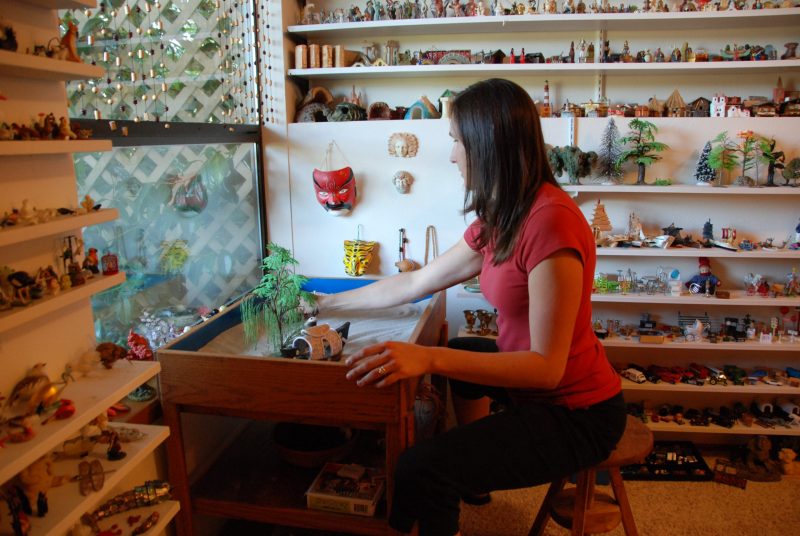
Sandplay is a remarkable form of non-verbal psychotherapy. Using miniatures and figurines, water, and a tray filled with sand, clients create three-dimensional sand scenes. Similar to dreams, sandplay operates on a deeply symbolic level.
No artistic talent is required to do sandplay, and there is no right or wrong way to “play in the sand.” Everyone is different and, therefore, every sand creation is perfect in its own way.
One of the most basic concepts of sandplay is that each individual has within him or her self the natural ability and strength to heal and grow. Sandplay unlocks that potential, frees creativity, and removes blocks to one’s inner development.
Sandplay can be especially helpful to those who have reached a plateau or feel they are stuck at some point in verbal therapy. During sessions, clients may talk while working in the sand, if they choose to do so. If they prefer to work in silence, that is just as effective. Sandplay is sometimes used as an adjunct to verbal therapy. Sometimes it is used as the main focus of therapy. It all depends on the wishes of the client.
The focus of sandplay is on the whole of the process – it is the making of a series of sand trays that extend over a period. Ideally, this period is non-limited, with scenes created when the client desires to make one. Sharing is done following the making of a tray and photos of them are filed for later review, if desired.
Who benefits from sandplay therapy?
Adults
Long standing emotional difficulties of adults are often resolved through sandplay. This type of therapy takes one into the unconscious and opens the psyche to the natural healing that may have been blocked. Sandplay seems to move adults toward wholeness by facilitating the integration of the split parts of the self.
Sandplay works well with many issues facing adults, including: depression, co-dependency, anxiety, addictions, eating disorders, rape/incest issues, grief/loss, coping with life threatening illness, and other concerns.
In addition to helping resolve problems, sandplay also facilitates personal growth and expands creativity. Many people find it exciting, challenging, and more comfortable to work with than verbal forms of therapy. Like dreamwork, it can vastly enrich one’s life.
“If I wanted to re-establish contact with that period (of childhood), I had no choice but to return to it and take up once more that child’s life with his childish games. This moment was a turning point in my fate…I went on with my building game (in the sand)…In the course of this activity my thoughts clarified, and I was able to grasp the fantasies whose presence in myself I dimly felt…I had…only the inner certainty that I was on the way to discovering my own myth.”
(Carl Jung)
Children
Playing in sand is a natural medium of expression for children. Frequently, they are drawn to a sandtray and spontaneously begin working in the sand with no prompting from a therapist. However, their parents soon discover that this form of play therapy is much more than “just play.” It is play with a purpose. Children sense the importance of sandplay therapy and often make rapid progress. As a result of this work, a child will often become calmer, more focused, and many symptoms of psychological distress may improve.